Exclusive Interview with C215
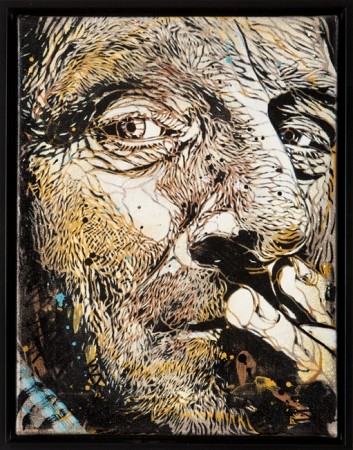
In honor of his first solo show, ‘Smoke Gets in Your Eyes,’ at the Shooting Gallery, French stencil artist C215 answered a few questions for us, providing thorough answers that not only give insight into his artistic intentions but into his personal character as well. Between studying “catholic theory of Architecture and Painting in XVIIth century, the history of Romanticism in Germany and the birth of Abstract in painting,” being a devout father to an 8 year old daughter and traveling around the world as a practicing and passionate artist it’s incredible to see that C215 still found time to create such a thoughtful solo show. Come see ‘Smoke Gets in Your Eyes,’ opening tomorrow from 7-11pm.
Read the full press release and RSVP Here
More After the Jump
I’ve heard a few accounts of your name coming from a cell number you’ve spent too much time in. Is that referring to time in jail? Or is that an inaccurate reading?
There are so many artists on the market that it is now very hard to make a difference as an artist, moreover about nicknames… As for personal mythology, soft provocation is a good trick to catch attention. I’ve been giving many different and contradictory explanations about my nickname but it seems the public prefers this one. If there is a cell I’ve been spending too much time in, it is my office when I was marketing researcher …I’ve been arrested for graffiti in Brooklyn in 2024, but they did let me go. I’ve been also arrested while painting in Istanbul, three times in Paris, one time in Amsterdam, another time in Maastricht, and the last time I spent one night in Police station was in 2024. I got a trial the same year, but French justice said I was more an “Artist” than a “Vandal.” It was really funny to discover that judges could sometimes be also kind of Art critics. Critics of Art can sometimes be also partial judges. I’ve been organizing and curating a complete group show about justice and death penalty in the Bridewell police station of Bristol in 2024, but it was pouring rain so London people did not move and we saw almost nobody at the opening. Everything I could say about justice has been artistically said in this exhibition. About my nickname, what I can say now is that C215 is a number translation of CRIS, which look like CHRIS, my first name, but means also “screams” in French. C215 is a red coulour in the Pantone but it also exists as a C215 Mercedes car, a C215 Motorola phone, and even a C215 usb key…I like that C215 is a very impersonal, abstract nickname, like a code or a reference, something ultramodern and deprived of feelings. The contrary of what I am: I am old fashioned, quite solitary, nostalgic, hypersensible, and by far too much human.
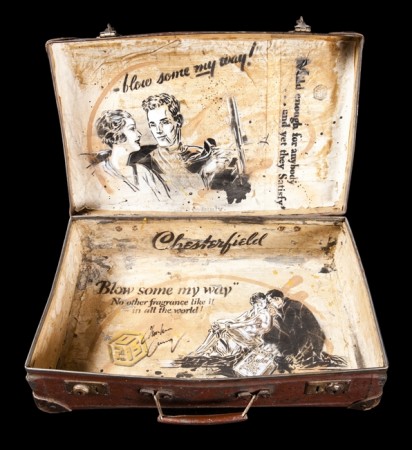
You’ve traveled all over the world, but still always come back to Paris, the city you were born in. What is it about home that you most miss while traveling? Have you ever lived anywhere else for a prolonged period of time?
My daughter Nina is now 8 years old and she lives in Paris, with her mother. That’s why I come back every two weeks. If she would move somewhere else I would follow her. And this anywhere. Whatever I did since she was born has been done for her, and she has been modeling my life more than I have been modeling her until now. I miss her constantly, but traveling to paint is a good way to stay patient in between two weekends with her. I have no special relationship to Paris, and these last three years I have been painting more in my own city, Vitry-sur-Seine, in the south of Paris, than in Paris itself. I am working more in Paris now that the city council is providing me official commissions, and if I got quicker artistic recognition abroad, it is now in France that I work the most. I am working more and more with French institutions and this makes me happy. I am 38 years old and anywhere I go, to tell you the truth, I always wish to stay. It is harder and harder for me to travel constantly but I will do it as long as I can. There is a beautiful German word to describe the melancholy of people traveling constantly: “Heimweh.” The public is considering me as a true-born traveler while I dream of a litlle house to stay in the French countryside. Being an artist is also this: turning upside down your own nature.
You have two masters in history and art, which must have a huge effect on your relationship with art. Are there specific ways you see your education influencing your work? What artists or movements have most inspired you?
I’ve been studying too long, and sometimes culture can be another kind of jail. I’ve been studying a lot of catholic theory of Architecture and Painting in XVIIth century, the history of Romanticism in Germany and the birth of Abstract in painting, through the painters Franz Marc and Kandinsky. All this is quite far from my activity: painting faces illegally in the streets of the world. For sure I have a catholic ideology, what I do can be considered as Romantic, and I work more and more on abstraction, but my inspiration comes from my own life and from my family. Details that are hard to transmit. For example my 2024 solo show by Signal gallery in London was entitled Midnight Dreams because it was the name of the bar of my uncle. This uncle, Patrick, commissioned me when I was 14 to do, as an advertising, a “graffiti billboard” using flashy coulours. I only had to write “Midnight Dreams” in a graffiti style and then I kept the spray cans. I used them later for the first time I painted in the streets. On the door of his bar was painted with an aerograph a girl with a quite yellow face and abstract hair. So the Signal show show was full of girls portraits, painted abstract with flashy coulours … my whole work is like this, very personal. Art is also a good way to turn egotism into originality, the best inspiration being yourself more than your idols. We are contemporary artists and part of our job is to turn personal things into universal stories.
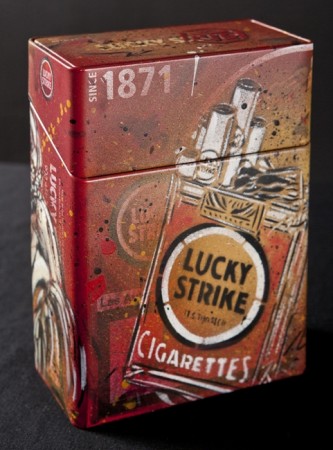
I know there are exceptions, I’m thinking specifically of a portrait of George Braque in ‘Smoke Gets in Your Eyes,’ but do you usually base your images off of photographs you’ve taken personally? Do you work with found photos?
I work more and more with my own pictures, but I have also favorite photographers among my friends, like Jeremy Gibbs or Jon Cartwright in London. I like to develop things with them since we share the same taste and sensibility. Both of their portraits are included in this show, and Jon, who is providing a lot of my pictures, is also one of my favorite models. I may have done five or six portraits of him. In theory, I don’t care about being the original photographer of the paintings I leave in the streets. What is important to me is to do a good painting. I consider myself as a sampler, catching bits of reality through photographs I cut and looping them in the streets, to create another reality and other pictures. At the end, there are close similarities between the latest music evolution and what I do. I am sometimes feeling like a DJ, taking tunes and mixing them together. What is important for me is to make people happy and see them enjoying.
Your stencils are never placed on a new canvas. In this show I see a lot of recycled materials, like cardboard and pieces of metal. Is this a way of bringing the aesthetic of the street into the gallery setting?
What is sure is that technically, spray paint (glycero) is not done to paint on canvasses. Canvasses are done for brushes, acrylic and oil painting. Spray paint is soon or later crackling on canvasses, because canvasses are constantly stretching while spray paint is not flexible. So I prefer to paint on hard surfaces. Anyway I don’t like canvasses. The white surface of a canvas is not neutral at all: it is somewhere written, invisible “here has to pop up Art.” There is no freedom nor artistic surprise at the end. I am not sure to be good at creating canvasses. My art is contextual. I like the streets because are they give me a context to interact with. I have the same feeling when painting on objects, at a smaller scale. When I find an object, like a luggage, a shoe shiner’s box, a cardboard piece or anything else, there are preexisting layers, coulours and even function that I can interact with through my paintings to make sense. There is something more than the design I paint on. These objects are full of their own past, their own life, and they provide an imaginary field for emotions. That’s why these objects are sometimes compared to the streets, because they are, when mixed with a nice painting, adding something to it. Recycling is a big challenge in the period we live in. Unconsciously people know it. It is always moving to see an object with no interest nor value being turned into a piece of art. This is also the magic of Art: turning something without value into a little treasure.
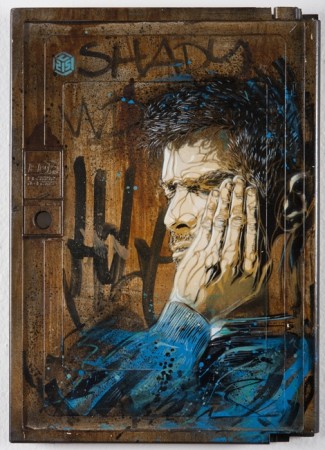
With this show you draw attention to the false and seemingly immoral tactics tobacco companies have used to sell cigarettes. Do you think it is easier for us to see the manipulation of advertising in ads from the seventies than in ads we view now because the marketing of cigarettes has drastically changed or for some other reason?
I did most of my university studies about historical topics and I know that it is always hard to see the vice of our own present times, and take distance from our own ideologies. Tobacco industry advertising has been evolving only because the law deprives them now to say so many bullshits than in the past. It is the function of advertising: lying to make people buy something. For the case of tobacco it is very easy to be shocked because it deals with public health, but I could do the same kind of show about other topics. I am thinking to prepare something about French nuclear industry.
Stencil art allows a freedom necessary for street art due to how quickly one can put it up, what else makes it your preferred medium?
Sure with a stencil you can put up very quick a painting in the streets, but I also enjoy the fact that I can spend as much time I want while cutting my stencils. When I began to cut stencils, most of the writers I knew at this period were not considering stencils as “Art”. It was a real challenge to find a style that would be considered as a real artistic style. I considered I was not a beginner anymore in 2024, after almost four years of permanent cutting. The style I found with my stencils is not something I can reproduce without this tool. That’s why I am now absolutely sure I don’t want to change medium. Moreover stencils are really excellent for the kind of “street art” I want to produce : small beautiful unexpected pieces left in the corners of the streets, because stencil is almost the only way to paint something smaller than the spray caps allow. In a certain way, I am very happy to limit myself with these tools, that I use along with other mediums, like acrylics. Any technique is good as long as I get the result I want in the streets.
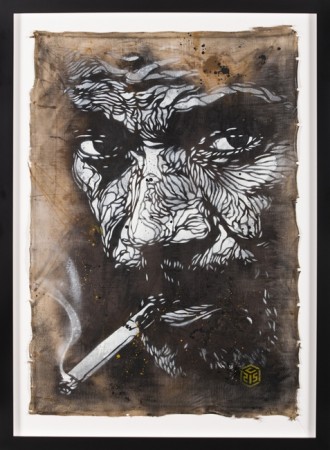
In one interview I read that when you place images on the street you work them into the context of the area, using portraits of people in favelas when in South America or more Westernized portraits of beggars in Berlin, when you have work in a gallery is the context of the environment still considered? Do you use a different color palette depending on area?
Street art and contextuality are according to me completely linked. That’s why I travel so much: to experience new contexts, new cultures, new architectures. There cannot be any “street art” in a gallery, only some good or bad art, but no “street art”. A gallery provides opportunity to create a body of work without context, like this research about tobacco industry, that I could not express in the same simple way if I was only painting on this subject in the streets. In the streets, I try to be consensual and shock nobody, while in galleries I allow myself more freedom. It is a very different exercise. I try now to soften and moderate my style in galleries, while I enjoy a complete stylistic freedom in the streets. Adrenaline and intentions are also not the same. Whatever an artist can say, a gallery exhibition is always a commercial story. The poetry can therefore not be the same. To be honest I feel more easy in the streets, for one good reason: there are no openings in the streets, and you don’t need to stay next to your street pieces for explaining their meaning. I am not feeling easy with public events where I have to represent myself. This is the most beautiful part of graffiti: when you face one of my street works, I am usually gone.
I know you might not be able to join us for the opening reception this Saturday because you may be traveling to Morroco to work on a commissioned piece? Can you tell us a bit about that?
It is the first time I cannot attend my own solo show. I am sorry for those who were expecting to meet me. I’ve been painting a lot in Morocco since 2024 and I’ve been commissioned to create pieces for different official delegations during the infamous Marrakech film festival, pieces that I have to paint here and right now.


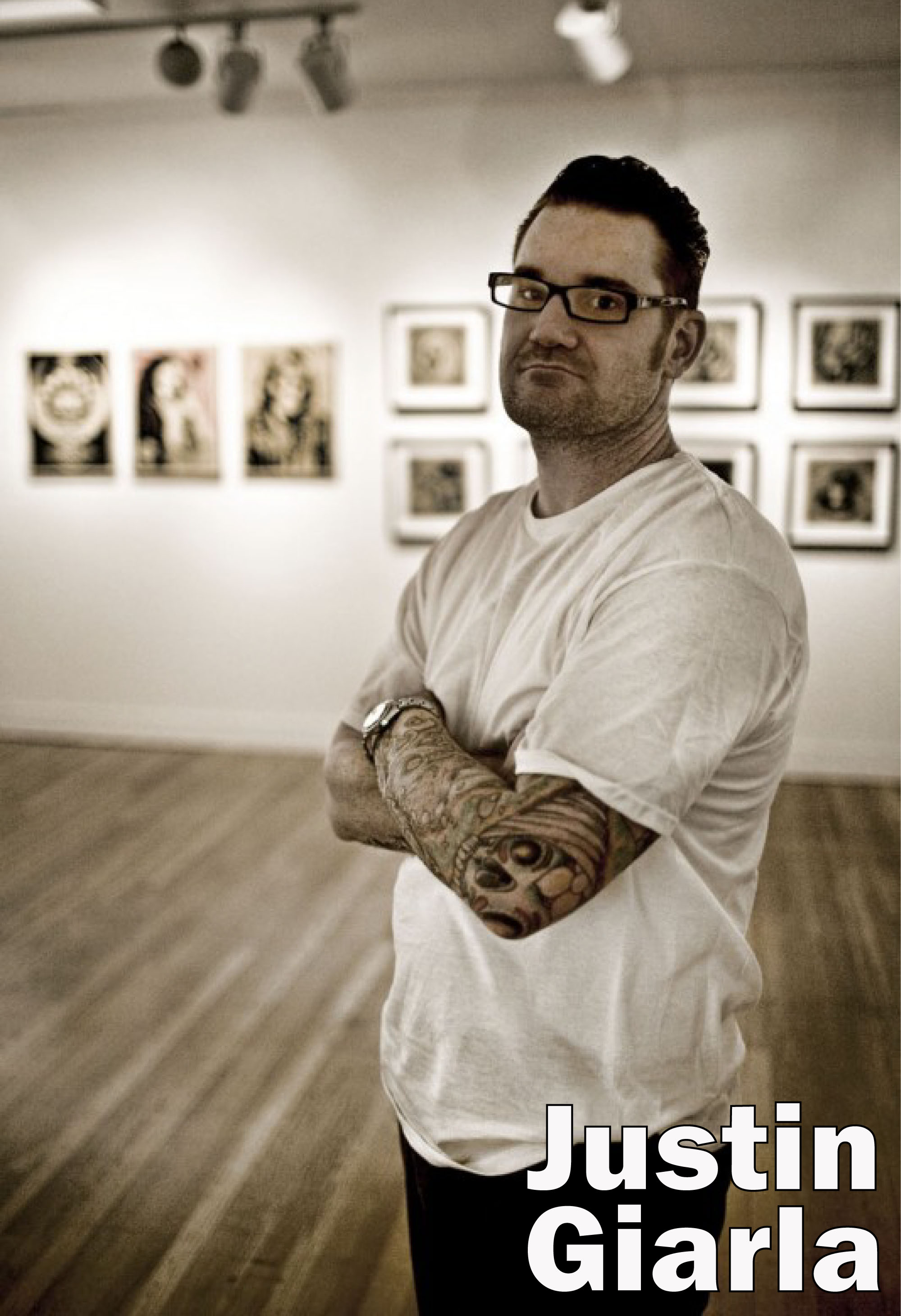


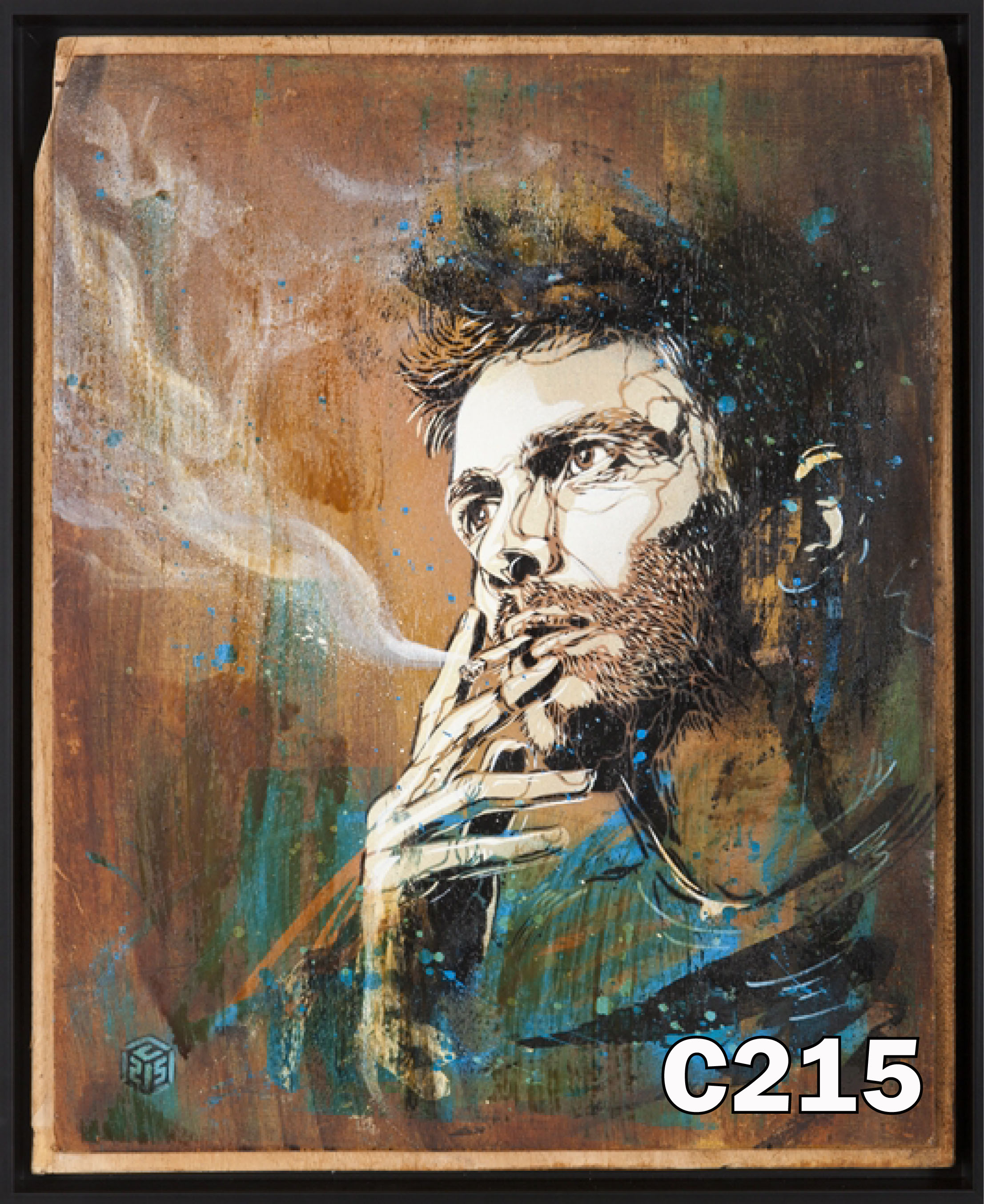
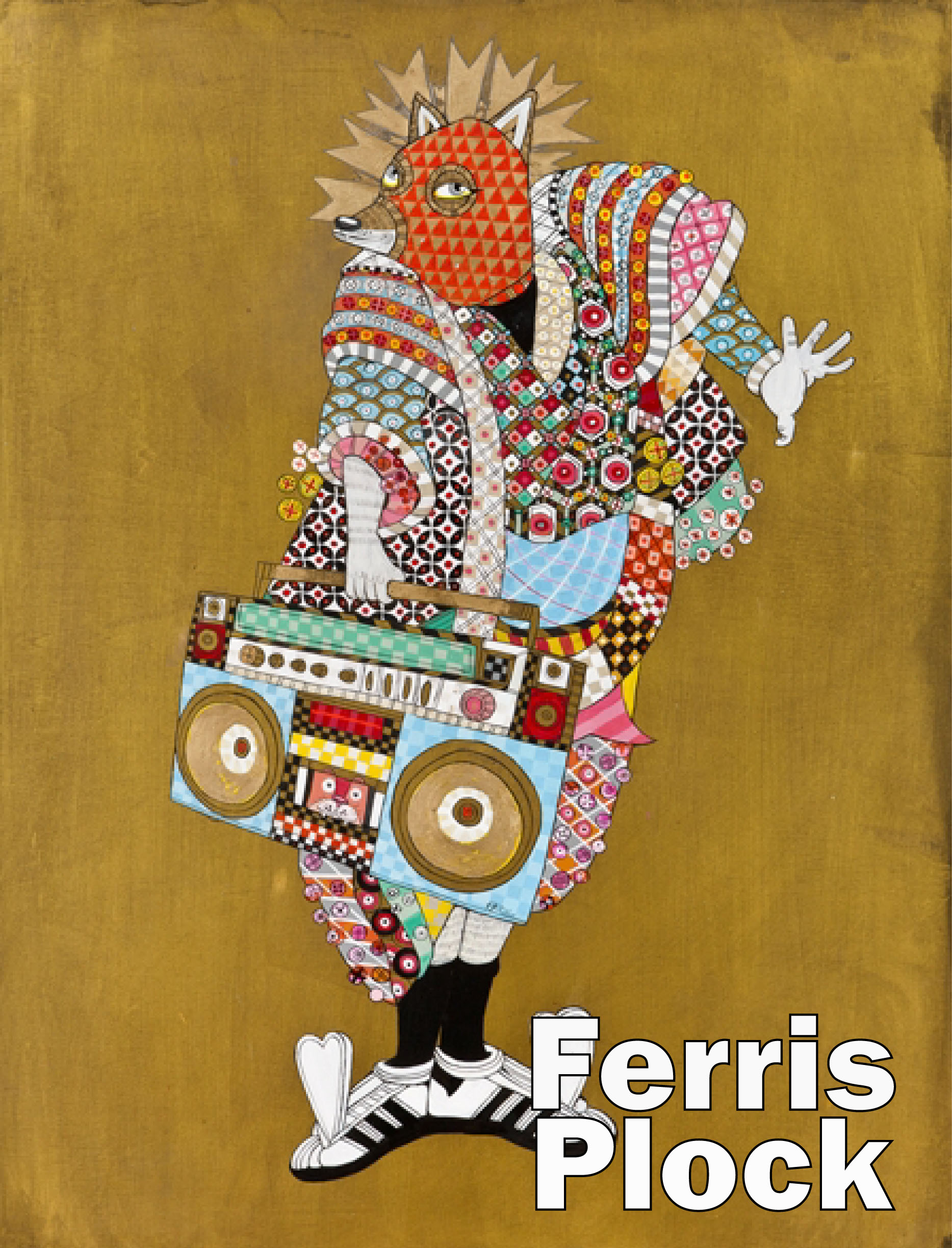
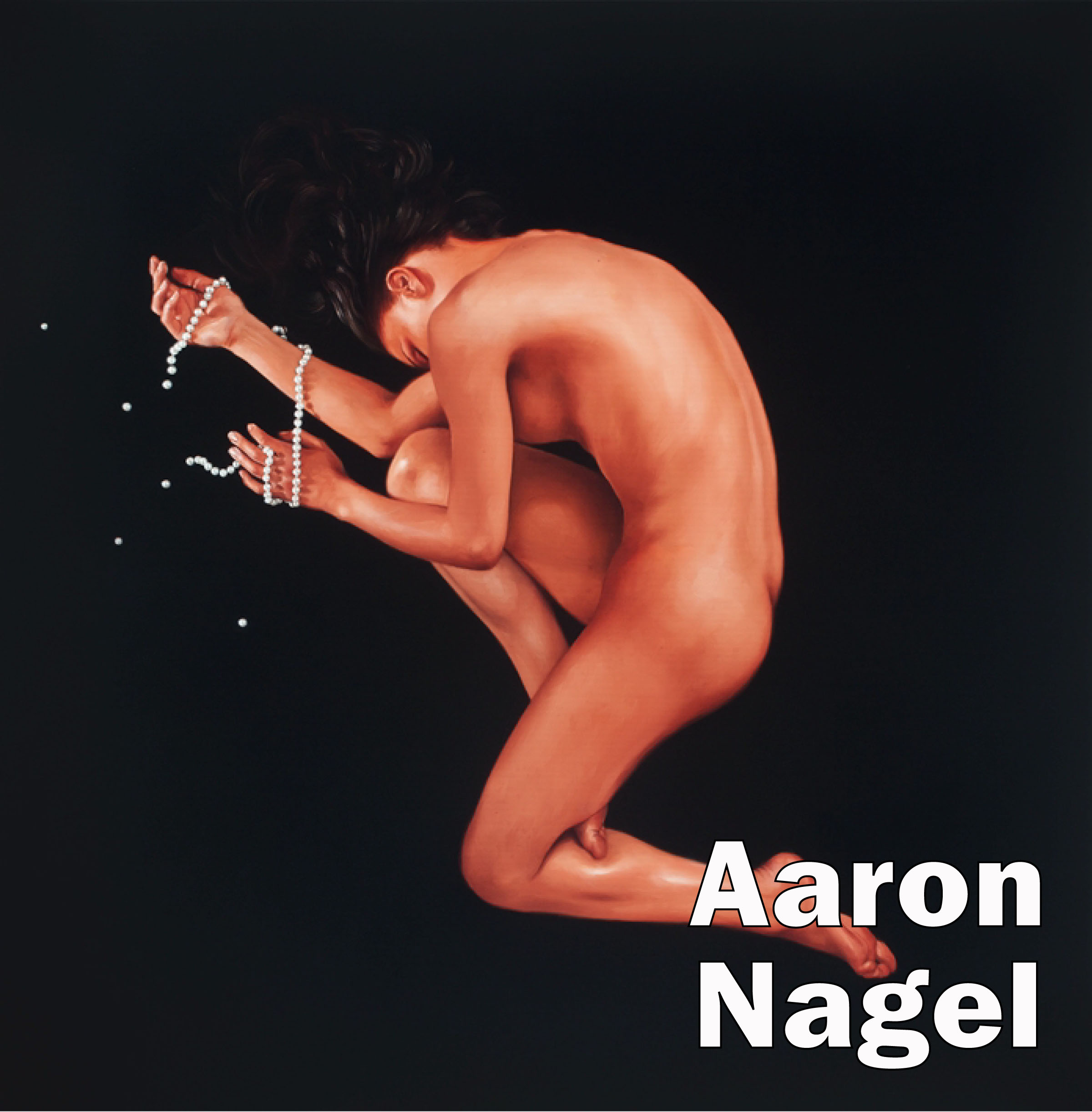
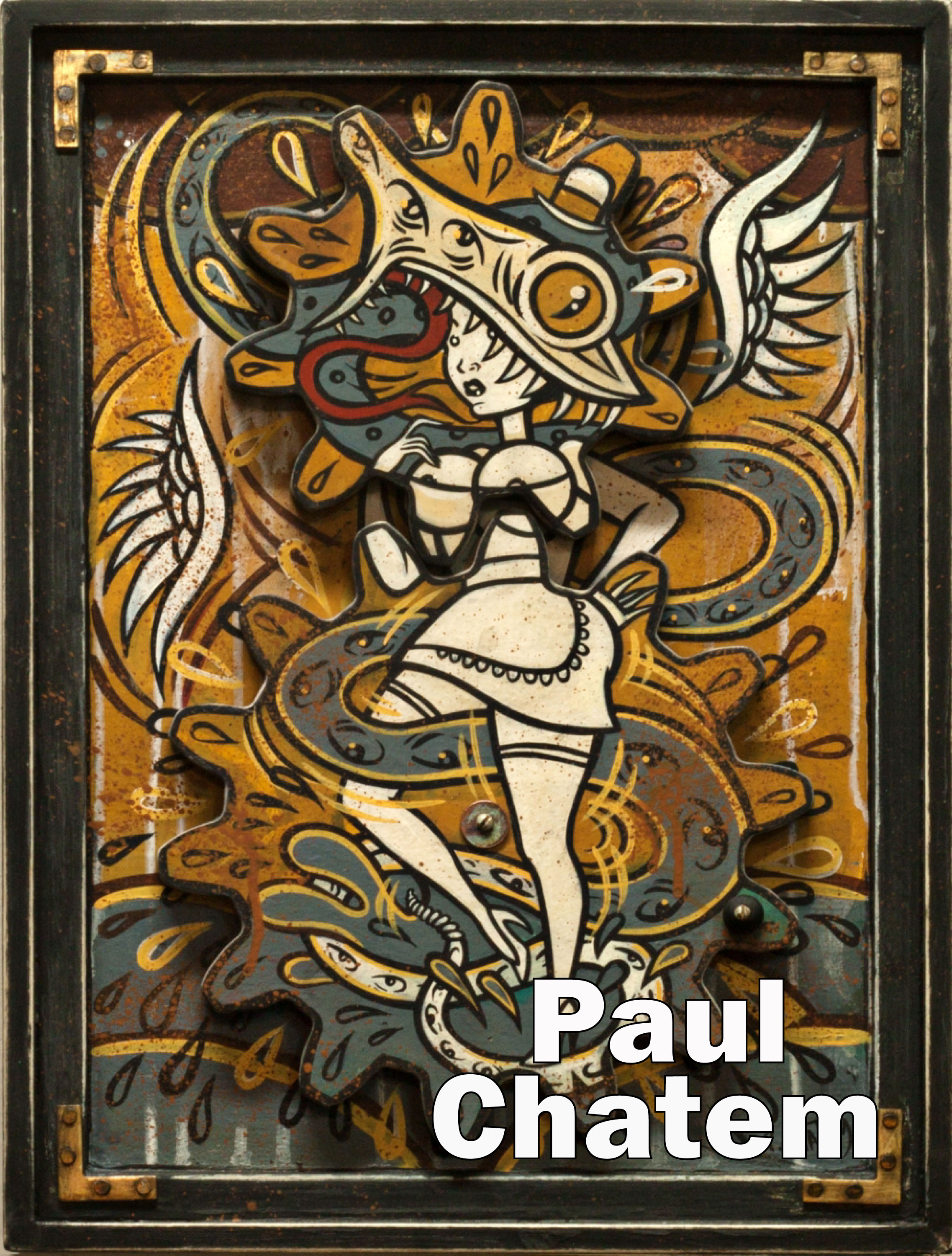
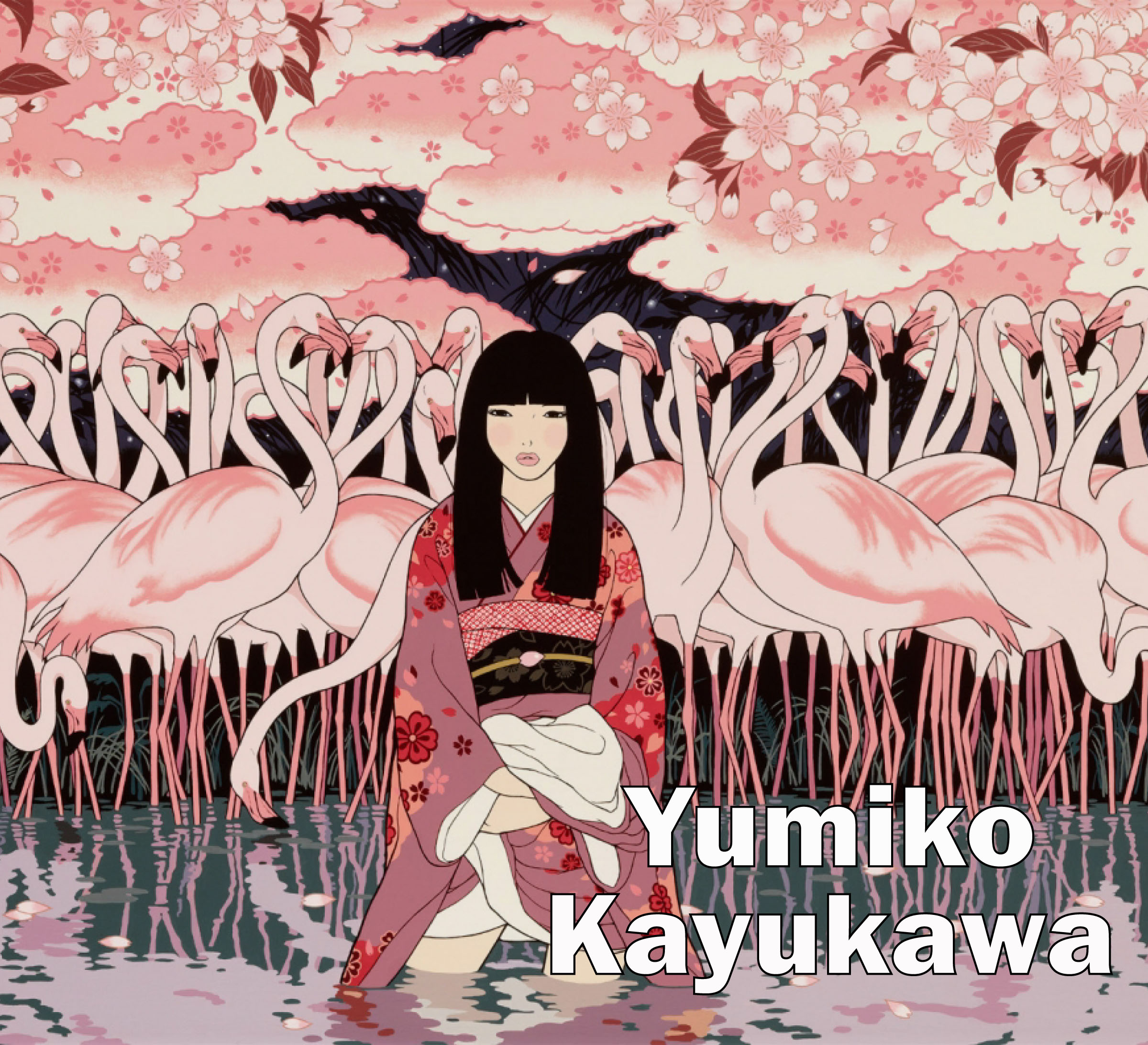
Such a brilliant artist, so genuine and talented. This is a great interview, probably the best I’ve read from him and believe me, I’ve read quite a few… Wish I had travelled in SF a month later and could have seen all these beauties in the flesh ! Good luck with the Show ;-)
Chris is a genuine artist, who through solid, hard work and dedication has created a more than unshakable foundation to support everything he says in this article. Great artists are all the same, their transparency brings forth the true meanings in their work, not intricate or intellectual concepts to explain the art in question. C215 never needs to be there to explain anything about his art, because his art says it all and there is still much more to be seen as this constantly developing artist amplifies his own exclusive stencil technique, which many have tried to copy, but none will ever surpass…………..
Brilliant interview, it really allows you to understand C215 as an individual as well as an artist. I am fascinated by his technique, I can honestly say he’s the most talented stencil artist out there - in fact he’s taken it to another level, and other “street artists” are consciously aware of this. Can’t tell you how pleased I am with the piece I bought from his Caravaggio show at Signal Gallery, London.
Well I hope C215 keeps travelling and visits Amsterdam a lot. I love discovering new pieces done by him in the city.
[...] the French street artist has had current interviews, including this one in the SF Gate and our own exclusive interview, I recently watched this video from February, 2024 and thought it was too good not to [...]